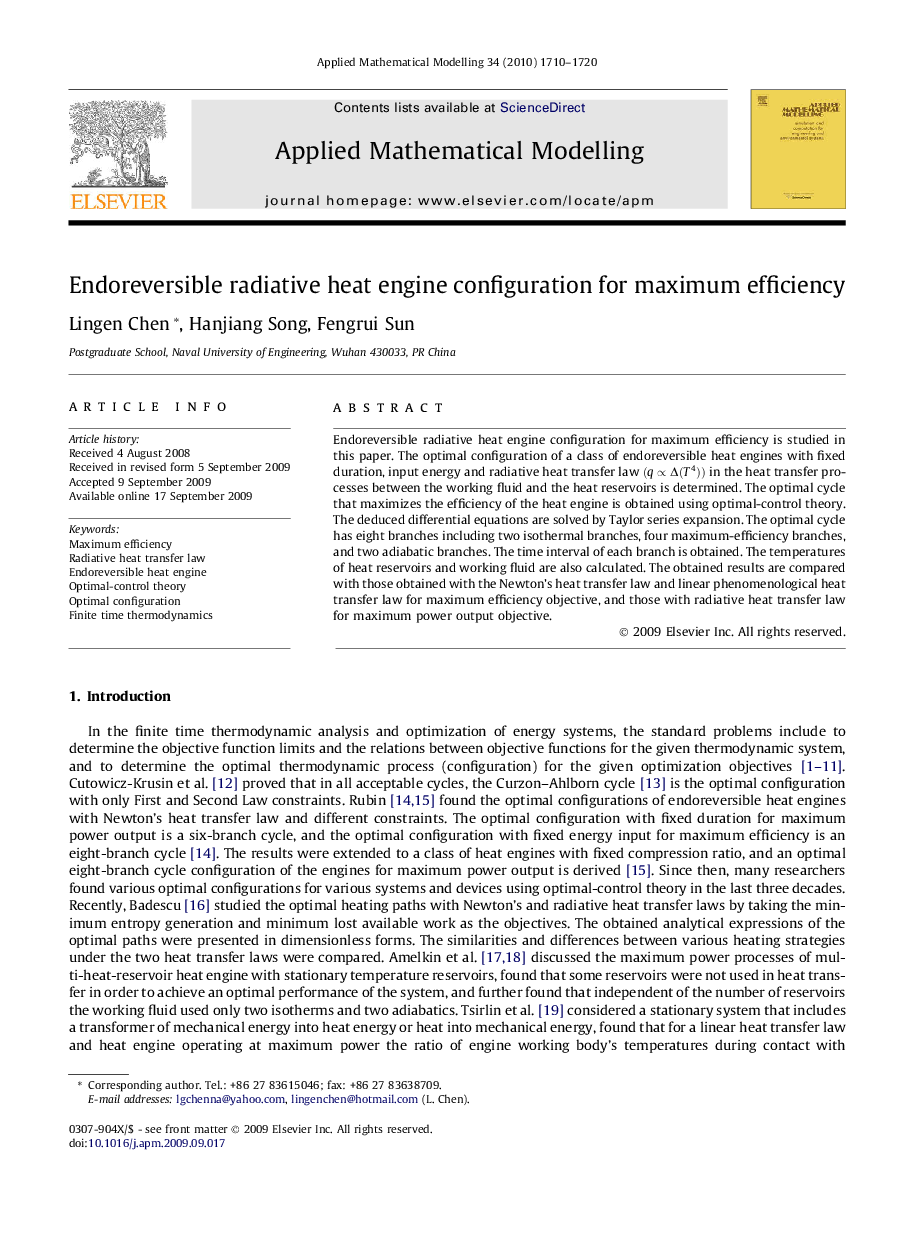| Article ID | Journal | Published Year | Pages | File Type |
|---|---|---|---|---|
| 1705303 | Applied Mathematical Modelling | 2010 | 11 Pages |
Endoreversible radiative heat engine configuration for maximum efficiency is studied in this paper. The optimal configuration of a class of endoreversible heat engines with fixed duration, input energy and radiative heat transfer law (q∝Δ(T4))(q∝Δ(T4)) in the heat transfer processes between the working fluid and the heat reservoirs is determined. The optimal cycle that maximizes the efficiency of the heat engine is obtained using optimal-control theory. The deduced differential equations are solved by Taylor series expansion. The optimal cycle has eight branches including two isothermal branches, four maximum-efficiency branches, and two adiabatic branches. The time interval of each branch is obtained. The temperatures of heat reservoirs and working fluid are also calculated. The obtained results are compared with those obtained with the Newton’s heat transfer law and linear phenomenological heat transfer law for maximum efficiency objective, and those with radiative heat transfer law for maximum power output objective.
